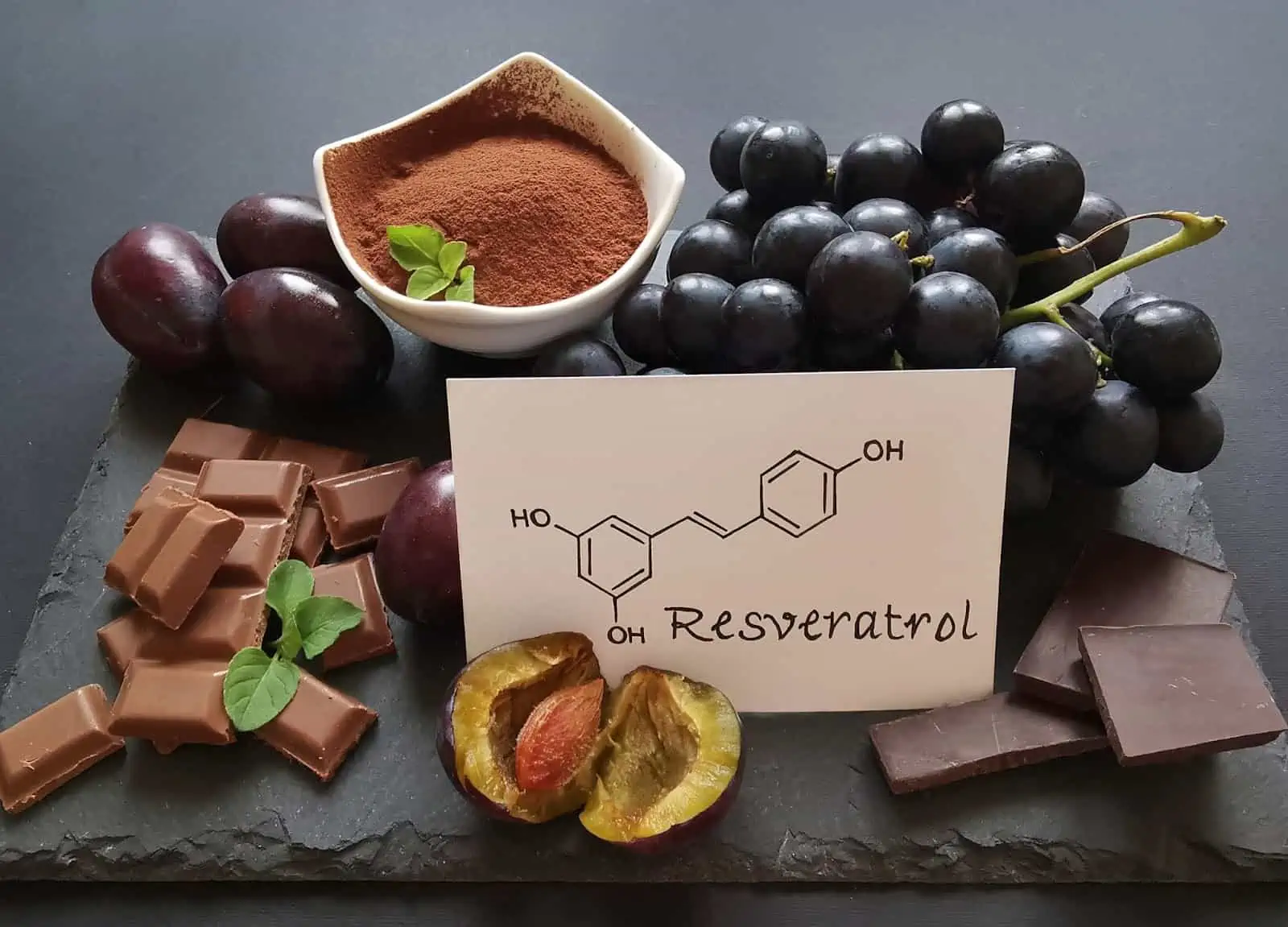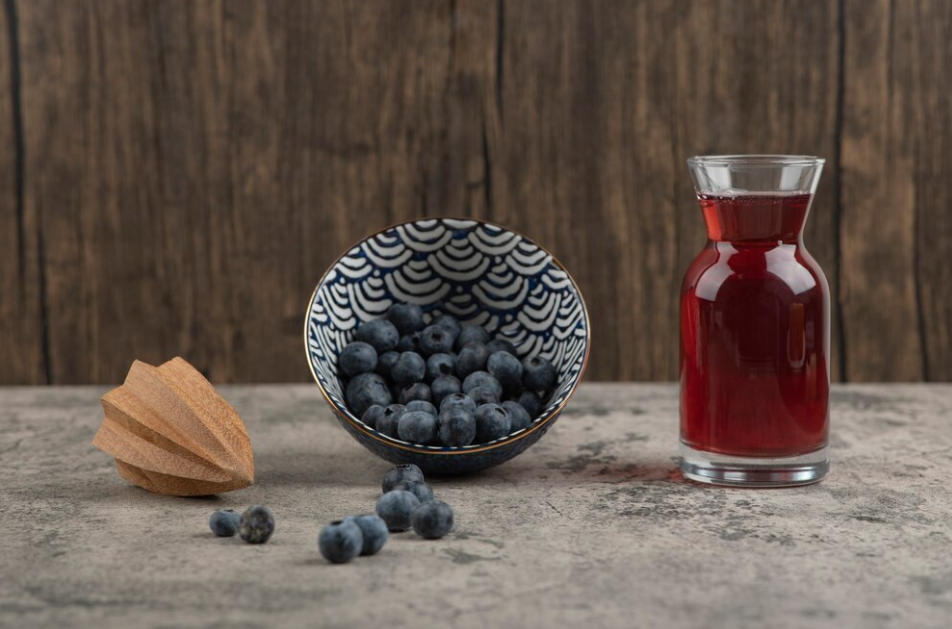by William Clearfield, D.O. for Longevinex
Introduction
Crickey, mate. We’ve stumbled into the shadowy world of health and wellness. A powerful, potent, mystery compound lies within the cryptic corners of scientific innovation. Loaded with the secrets to unleash an unprecedented era of wellness and dynamism, this secret sauce will be the must-have product in every household’s apothecary.

I know. I know. You have heard it all before. “Buy our ‘miracle’ Immune Mystique. We cure bad breath, psoriasis, high cholesterol, and acne pocked faces. You will run faster, jump higher, and be the envy of your neighborhood. Women or men, whatever your preference, will swoon at the mere mention of your name. Take ‘Immune Mystique,’ and be prepared to fend off the paparazzi or the next pandemic. Only $49.99. But time is limited. You must act within the next ninety milliseconds, or your life’s hopes and dreams will disappear. (And besides, I have car payments to make.)”
I’m sorry to tell you this, dear readers. That all-encompassing, all-curing, all-knowing, all-seeing, wise-beyond-its-years, limited-time-only, life-saving Immune Mystique does not exist yet. At least, I don’t think it exists.
But fear not, fellow traveler. Join us as we embark on a ride as thrilling as Charlotte, North Carolina’s 95 mph, 325-foot drop Carowinds Fury 325 giga coaster. (1)
At the tail-end of the COVID-19 frenzy, I searched for a safe, effective, and relatively inexpensive immune-boosting agent to stay well in this new world of “deadly,” mysterious, unseen, and nearly undetectable microscopic poisonings. Though things seemed bleak at the time, at least we were not living in the time of the bubonic plague thought to be brought on by witches and devils. We have “Science,” ™ entire compendiums of vitamins, herbs, minerals, supplements, pharmaceuticals, and ‘experts’ at our disposal. All the television talking heads told us so. “Trust “Science,” ™ That worked out well.
“The truth is out there,” Scully of X-Files fame said to Mulder. “So are the lies,” Mulder replied. I knew we would find the answer. What was needed was courage, grit, foresight, and stubbornness. Failure was not an option.
I made an educated guess that no single agent would fulfill our needs. Synergy, from the Attic Greek word synergia, meaning “working together,” is the interaction or cooperation of two or more organizations, substances, or other agents to produce a combined effect greater than the sum of their separate products. (2) It was apparent early on we needed to find compatible, synergistic components.
So, I dove in.
Finding the base elements for our superstar molecule was relatively easy. No self-respecting immune booster is complete without its two most powerful allies, Zinc and Vitamin. (3-4)
Zinc
- Enzymatic Activity-Crucial for developing and functioning neutrophils and natural killer cells, zinc is a cofactor in over 300 essential enzymes responsible for immune responses among its cellular processing functions. (5-6)
- T-Cell Function-T-cells are a type of white blood cell at the core of adaptive immunity. Zinc deficiencies result in fewer T-cells with a corresponding reduction in cell function. (7)
- Antioxidant Properties-Termed oxidative stress, damage to cells and tissues leads to inflammation and weakened immune responses. Zinc alleviates oxidative stress. (8)
- Cytokine Regulation-Zinc reduces the production of IL-1β, IL-2, IL-6, and TNF-α inflammatory proteins (cytokines) that act as messengers between cells in the immune system. Cytokine regulation is essential for coordinating immune responses to pathogens. (9)
- Gene Expression- Zinc controls the genes producing white blood cells and developing immune cells in the bone marrow. (10)
Vitamin C
- White Blood Cells Production and Function-Vitamin C supports the production and function of neutrophils, lymphocytes, and phagocytes. These cells play essential roles in infection defense. (11)
- Antioxidant Properties-Vitamin C neutralizes free radicals, reducing oxidative stress and inflammation. (12)
- Skin Protection-Readily transported to the skin, Vitamin C strengthens dermal barriers. Vitamin C enhances type 1/type 4 collagen, SVCT2 mRNA expression, and type 1 procollagen synthesis. (13)
- Cytokine Production-Vitamin C influences the production of pro-inflammatory cytokines, TNF-α, IFN-γ, IL-6, anti-inflammatory IL-10, and attenuates histamine production. Vitamin C does not affect IL-1β levels. (14-15)
- The Common Cold-Vitamin C reduces the duration and severity of viral upper respiratory infectious (i.e., the common cold) symptoms in adults by 8% (3% to 12%) and in children by 14% (7% to 21%). Regular Vitamin C utilization reduces the severity of colds. (16)
Teasing out the rest of the formula was more challenging. Internet searches revealed thousands of foods, vitamins, minerals, herbs, and single-unit supplements with some immune-boosting abilities.
We settled the question by basing our search on the proverb, “Everything old is new again.” Attributed to Winston Churchill and Mark Twain, among others (actually, the earliest attribution I found was from Jonathan Swift of Gulliver’s Travels fame from an essay called Political Lying in 1710), we scoured “underground” and densely written “hidden” texts to piece together our perfect formula. (17)
Pyridoxine-Vitamin B6 (as Pyridoxal-5-Phosphate)
Essential for the proper functioning of enzymes and proteins that smooth the environment for a properly functioning metabolism, Vitamin B6, in the form of pyridoxal-5-phosphate, is critical for the synthesis of neurotransmitters, the formation of red blood cells, white blood cells, and immune regulatory responsive T-cells.
- T-Cell Differentiation and Function- Vitamin B6 is essential for T cells, a particular white blood cell type that plays a crucial role in immune responses. (18)
- Amino Acid Metabolism-Involved in amino acid metabolism, Vitamin B6 is essential for producing antibodies necessary for immune responses and protein synthesis. (19)
- Cytokine Production- Vitamin B6 influences the production of IL‐1β, TNF‐α, IL‐6, and iNOS cytokines, inflammatory proteins that play a vital role in cell signaling within the immune system. (20)
- Hemoglobin Production-Proper oxygenation supports overall cell health, including energy, strength, sense of well-being, and immune cell function. Vitamin B6 is a vital component in the synthesis of hemoglobin. (21)
- Reduction of Homocysteine Levels-An amino acid, homocysteine, when elevated (normal is less than 11 mcmol/L, optimal is less than 10 mcmol/L), is indicative of arterial damage, particularly in the coronary arteries, and cognitive function. Low levels of Vitamins B6, B12, and folic acid are a significant cause of the rise of homocysteine levels. (22-23)
Side Note: Ten times (10X) more potent than its substrate, Pyridoxal-5-Phosphate (P5P) is the active coenzyme form of Vitamin B6. Conversion of Vitamin B6 to its “usable” P-5-P form, especially for those with impaired B6 metabolism, improved our supplements’ efficacy.
P5P (B6) is involved in over 100 enzymatic reactions. Most of this metabolic activity is related to protein metabolism. This active form of Vitamin B6 ensures that P5P can readily accomplish our goals and support a variety of physiological functions, including immunity. (24)
Selenium
Critical for thyroid health, by facilitating the conversion of T4 to T3, selenium acts as a powerful antioxidant. A trace mineral, selenium boosts the immune system, protects against heart disease, and reduces asthma symptomatology. (25)
- Antioxidant Defense- A vital component of the classification of 25 encoded genes, known as selenoproteins, selenium, and glutathione peroxidases, are enzymes that act as antioxidants. Selenoproteins neutralize harmful free radicals in the body, reduce oxidative stress, and prevent cellular damage. (26)
- Enhancement of Immune Cell Function-Selenium enhances the proliferation and activity of T-lymphocytes, NK (natural killer) cells, and phagocytes, immune cells that play a vital role in immune responses. (27)
- Antiviral Activity-Adequate selenium levels lessen the virulence of influenza, HIV, and polio infections. (28)
- Regulation of Inflammatory Responses-Selenium modulates the production of pro-inflammatory cytokines, TNF-α, IL-1B, and IL-6, and increases the secretion of the anti-inflammatory IL-10. (29-30)
- Support of Immune-Related Gene Expression-Selenium influences the expression of genes related to immune function. (31)
Royal Jelly
A worker bee feeding the queen bee-produced substance, Royal Jelly, supports blood sugar control, brain, immune, and skin protection and promotes healthy aging.
- Immune Cell Stimulation-Royal Jelly stimulates the proliferation of macrophages and lymphocytes while decreasing inflammatory proteins. (32)
- Antioxidant Properties-Royal Jelly contains flavonoids, phenolic acids, and terpenoids, natural substances capable of counteracting the oxidative stress effects underlying the pathogenesis of chronic diseases, such as neurodegenerative disorders, cancer, diabetes, atherosclerosis, and pharmaceutical side effects. (33)
- Anti-inflammatory Effects-Royal Jelly demonstrates anti-inflammatory effects by inhibiting TNF-alpha, IL-6, IL-1, and matrix metalloproteinase-9 (MMP9) without cytotoxic effect on macrophages. (34)
- Antimicrobial Properties-Royal Jelly demonstrates antimicrobial effects against bacteria, viruses, yeast, and fungi. Trans-10- hydroxy-2-decanoic acid, Royalisin, and Jelleines are the main antimicrobial bio-actives obtained from RJ. (35)
- Modulation of Immune-Related Gene Expression- Royal Jelly influences the expression of gene-related immune function. Honey-activated keratinocytes (skin cells) demonstrate increased levels of MMP-9 in the epidermis, leading to the degradation of type IV collagen in the basement membrane, resulting in accelerated wound healing. (36)
β-Cyclodextrin
So, now what? We have identified our target. We are over the bull’s eye, ready to pull the trigger. How do we unite our miracle component molecules into a collaborative, cohesive unit?
Our task was to stabilize our ingredients, improve their absorption into the body, reduce the amount of “drug” needed, control its release, and lengthen the time the product remains effective. We needed the equivalent of an “escape pod” when our Starship Enterprise was about to disintegrate. How do we “put it all together” for our desired outcome? (37)
As I see it, we needed to overcome eight factors. We required enhanced solubility to incorporate our product into its host, protection from component degradation, the ability to modify the release of active ingredients to prolong efficacy, reduce potential side effects, and, if we could lower cholesterol, improve the taste and sensation of bitter-tasting compounds, and enhance weight loss along the way, we wouldn’t complain. (38- 44)
In short, we just described ‘cyclodextrins,’ cyclic oligosaccharides used for all eight factors noted above.
And there you have it, dear reader. It’s three in the morning. My eyes are tired, my head hurts, and my ears are ringing. But we’ve done it! We’ve identified Zinc, Vitamin C, Vitamin B6 (as Pyridoxal-5-Phosphate), Selenium, and Royal Jelly wrapped in a Cyclodextrin coating as the building blocks for our “perfect” immune boosting supplement, ‘Immune Mystique.’
I can hardly wait till morning to unveil our discovery to the world. Just one more thing to do. Patent search.
Is “Immune Mystique” better and different than other products previously invented? If yes, is there a patent that may hurt our chance of getting our own issued patent? Do other patents that solve the same problem exist? (45)
I have it knocked, I thought. I hold my rightful place as the ‘Godfather’ of immune health.
Just as I thought I would be with digestive health if only those meddling rascals at Resveratrol Partners LLC in Las Vegas hadn’t beat me to it.
Remember when I put together the ‘Magnificent Seven’ of digestive health? (46) We combined Vitamin C with Apple Pectin, Taurine, Fennel Seed Powder, Rice Bran IP6, Betaine, Lactase, and Alkalinized Garlic Powder. Perfect.
The only trouble was Resveratrol Partners, may a higher power steer me away from the impure thoughts I have of just thinking of them, had produced, in 2015, using my ingredients, Garligest TM! The nerve of them.
The search turned into a disaster. My latest, beautiful creation, my perfect ‘Immune Mystique’ is identical to
T-CELL ZINC FROM RESVERATROL PARTNERS (LONGEVINEX)
Crickey, something mighty spooky is happening here. We must send a spy down to Vegas and see what that company is doing. Do you, dear reader, have the courage, will, and fortitude to solve this mystery? Can you sniff out the clues as to how Resveratrol Partners keeps beating me to the punch?
One of you must step up to the plate. If not, I will be forced to call Teddy, and we all know how that usually turns out. (47-49) There’s something strange in the Resveratrol Partners neighborhood. Until then, dear friends, buckle up, be safe, and take your T-Cell Zinc because who knows what crazy mystery awaits next!
References
- https://www.carowinds.com/rides-experiences/fury-325
- https://www.google.com/search?q=define+synergy&rlz=1C1PRFI_enUS98 2US982&oq=define+synergy&aqs=chrome..69i57j0i512l2j0i10i512l6j0i51 2.2509j1j7&sourceid=chrome&ie=UTF-8
- Fraker PJ, King LE, Laakko T, Vollmer TL. The dynamic link between the integrity of the immune system and zinc status. J Nutr. 2000 May;130(5S Suppl):1399S-406S. doi: 10.1093/jn/130.5.1399S. PMID: 10801951.
- Carr AC, Maggini S. Vitamin C, and Immune Function. Nutrients. 2017 Nov 3;9(11):1211. doi: 10.3390/nu9111211. PMID: 29099763; PMCID: PMC5707683.
- Maares M, Haase H. Zinc and immunity: An essential interrelation. Arch Biochem Biophys. 2016 Dec 1;611:58-65. Doi: 10.1016/j.abb.2016.03.022. Epub 2016 Mar 26. PMID: 27021581.
- Cheng Y, Chen H. Aberrance of Zinc Metalloenzymes-Induced Human Diseases and Its Potential Mechanisms. Nutrients. 2021 Dec 13;13(12):4456. doi: 10.3390/nu13124456. PMID: 34960004; PMCID: PMC8707169.
- Fraker, P. J., King, L. E., Laakko, T., & Vollmer, T. L. (2000). The dynamic link betwee the integrity of the immune system and zinc status. *The Journal of Nutrition*, 130(5S Suppl), 1399S-1406S. [Link](https://academic.oup.com/jn/article/130/5/1399S/4686381)
- Prasad AS. Zinc in human health: effect of zinc on immune cells. Mol Med. 2008 May-Jun;14(5-6):353-7. doi: 10.2119/2008-00033.Prasad. PMID: 18385818; PMCID: PMC2277319.
- Foster M, Samman S. Zinc and regulation of inflammatory cytokines: implications for cardiometabolic disease. Nutrients. 2012 Jul;4(7):676-94. doi: 10.3390/nu4070676. Epub 2012 Jul 4. PMID: 22852057; PMCID: PMC3407988.
- Haase, H., & Rink, L. (2009). Functional significance of zinc-related signaling pathways in immune cells. *Annual Review of Nutrition*, 29, 133-152. (https://www.annualreviews.org/doi/abs/10.1146/annurev-nutr-080 508-141119)
- Carr AC, Maggini S. Vitamin C, and Immune Function. Nutrients. 2017 Nov 3;9(11):1211. doi: 10.3390/nu9111211. PMID: 29099763; PMCID: PMC5707683.
- Wintergerst, E. S., Maggini, S., & Hornig, D. H. (2006). Immune-enhancing role of vitamin C and zinc and effect on clinical conditions. *Annals of Nutrition & Metabolism*, 50(2), 85-94. [Link](https://www.karger.com/Article/Abstract/90495)
- Kishimoto, Y., Saito, N., Kurita, K., Shimokado, K., Maruyama, N., & Ishigami, A. (2013). Ascorbic acid enhances the expression of type 1 and type 4 collagen and SVCT2 in human skin fibroblasts. *Biochemical and
- Biophysical Research Communications*, 430(2), 579-584. [Link](https://www.sciencedirect.com/science/article/pii/S0006291X1202 3010)
- Chen Y., Luo G., Yuan J., Wang Y., Yang X., Wang X., Li G., Liu Z., Zhong N. Vitamin C mitigates oxidative stress and tumor necrosis factor-alpha in severe community-acquired pneumonia and LPS-induced macrophages. Mediators Inflamm. 2014;2014:426740. doi: 10.1155/2014/426740
- Hagel A.F., Layritz C.M., Hagel W.H., Hagel H.J., Hagel E., Dauth W., Kressel J., Regnet T., Rosenberg A., Neurath M.F., et al. Intravenous infusion of ascorbic acid decreases serum histamine concentrations in patients with allergic and non-allergic diseases. Naunyn Schmiedebergs Arch. Pharmacol. 2013;386:789–793. doi: 10.1007/s00210-013-0880-1.
- Hemilä H, Chalker E. Vitamin C for preventing and treating the common cold. Cochrane Database of Systematic Reviews 2013, Issue 1. Art. No.: CD000980. DOI: 10.1002/14651858.CD000980.pub4. Accessed 20 August 2023.
- https://www.dailykos.com/stories/2019/7/14/1871717/-Everything-Old-Is-New-Again-A-Voice-from-History
- Qian B, Shen S, Zhang J, Jing P. Effects of Vitamin B6 Deficiency on the Composition and Functional Potential of T Cell Populations. J Immunol Res. 2017;2017:2197975. doi: 10.1155/2017/2197975. Epub 2017 Mar 6. PMID: 28367454; PMCID: PMC5358464.
- Shibata K, Mushiage M, Kondo T, Hayakawa T, Tsuge H. Effects of vitamin B6 deficiency on the conversion ratio of tryptophan to niacin. Biosci Biotechnol Biochem. 1995 Nov;59(11):2060-3. doi: 10.1271/bbb.59.2060. PMID: 8541642.
- Du X, Yang Y, Zhan X, Huang Y, Fu Y, Zhang Z, Liu H, Zhang L, Li Y, Wen Q, Zhou X, Zuo D, Zhou C, Li L, Hu S, Ma L. Vitamin B6 prevents excessive inflammation by reducing accumulation of sphingosine-1-phosphate in a sphingosine-1-phosphate lyase-dependent manner. J Cell Mol Med. 2020 Nov;24(22):13129-13138. doi: 10.1111/jcmm.15917. Epub 2020 Sep 23. PMID: 32967056; PMCID: PMC7701526.
- Parra M, Stahl S, Hellmann H. Vitamin B₆ and Its Role in Cell Metabolism and Physiology. Cells. 2018 Jul 22;7(7):84. doi: 10.3390/cells7070084. PMID: 30037155; PMCID: PMC6071262.
- https://www.webmd.com/heart-disease/homocysteine-risk
- Selhub J, Bagley LC, Miller J, Rosenberg IH. B vitamins, homocysteine, and neurocognitive function in the elderly. Am J Clin Nutr. 2000 Feb;71(2):614S-620S. doi: 10.1093/ajcn/71.2.614s. PMID: 10681269.
- http://www.martinavenue.com/index.php/pyridoxal-5-phosphate-p5p- and-vitamin-b6/#:~:text=Pyridoxal%205%2DPhosphate%20has%20been,i t%20an%20overall%20superior%20supplement.
- Hoffmann PR, Berry MJ. The influence of selenium on immune responses. Mol Nutr Food Res. 2008 Nov;52(11):1273-80. doi: 10.1002/mnfr.200700330. PMID: 18384097; PMCID: PMC3723386.
- Labunskyy VM, Hatfield DL, Gladyshev VN. Selenoproteins: molecular pathways and physiological roles. Physiol Rev. 2014 Jul;94(3):739-77. doi: 10.1152/physrev.00039.2013. PMID: 24987004; PMCID: PMC4101630.
- Kiremidjian-Schumacher L, Roy M. Selenium and immune function. Z Ernahrungswiss. 1998;37 Suppl 1:50-6. PMID: 9558729.
- Huang, Z., Rose, A. H., & Hoffmann, P. R. (2012). The Role of Selenium in Inflammation and Immunity: From Molecular Mechanisms to Therapeutic Opportunities. Antioxidants & Redox Signaling, 16(7), 705-743. https://doi.org/10.1089/ars.2011.4145
- Ansar S. Effect of Selenium on the Levels of Cytokines and Trace Elements in Toxin-Mediated Oxidative Stress in Male Rats. Biol Trace Elem Res. 2016 Jan;169(1):129-33. Doi: 10.1007/s12011-015-0403-7. Epub 2015 Jun 20. PMID: 26089086.
- Curran JE. Jowett JB. Elliott KS. Gao Y. Gluschenko K. Wang J. Abel Azim DM. Cai G. Mahaney MC. Comuzzie AG. Dyer TD. Walder KR. Zimmet P. MacCluer JW. Collier GR. Kissebah AH. Blangero J. Genetic variation in selenoprotein S influences inflammatory response. Nat Genet. 2005;37:1234–1241.
- Lammi MJ, Qu C. Selenium-Related Transcriptional Regulation of Gene Expression. Int J Mol Sci. 2018 Sep 8;19(9):2665. doi: 10.3390/ijms19092665. PMID: 30205557; PMCID: PMC6163693.
- Wang, W., Li, X., Li, D., Pan, F., Fang, X., Peng, W., & Tian, W. (2023). Effects of Major Royal Jelly Proteins on the Immune Response and Gut Microbiota Composition in Cyclophosphamide-Treated Mice. Nutrients, 15(4). https://doi.org/10.3390/nu15040974
- Kocot, J., Kiełczykowska, M., Luchowska-Kocot, D., Kurzepa, J., & Musik, I. (2017). Antioxidant Potential of Propolis, Bee Pollen, and Royal Jelly: Possible Medical Application. Oxidative Medicine and Cellular Longevity, 2018. https://doi.org/10.1155/2018/7074209
- Kohno K, Okamoto I, Sano O, Arai N, Iwaki K, Ikeda M, Kurimoto M. Royal jelly inhibits the production of proinflammatory cytokines by activated macrophages. Biosci Biotechnol Biochem. 2004 Jan;68(1):138-45. doi: 10.1271/bbb.68.138. PMID: 14745176.
- M. Alreshoodi, Fahad; Sultanbawa, Yasmina, Antimicrobial Activity of Royal Jelly. Anti-Infective Agents, Volume 13, Number 1, 2015, pp. 50-59(10)
- Majtan J, Kumar P, Majtan T, Walls AF, Klaudiny J. Effect of honey and its major royal jelly protein 1 on cytokine and MMP-9 mRNA transcripts in human keratinocytes. Exp Dermatol. 2010 Aug;19(8):e73-9. Doi: 10.1111/j.1600-0625.2009.00994.x. PMID: 19845754.
- Stella VJ, Rajewski RA. Cyclodextrins: their future in drug formulation and delivery. Pharm Res. 1997 May;14(5):556-67. doi: 10.1023/a:1012136608249. PMID: 9165524.
- Loftsson T, Duchêne D. Cyclodextrins and their pharmaceutical applications. Int J Pharm. 2007 Feb 1;329(1-2):1-11. doi: 10.1016/j.ijpharm.2006.10.044. Epub 2006 Nov 9. PMID: 17137734.
- Brewster ME, Loftsson T. Cyclodextrins as pharmaceutical solubilizers. Adv Drug Deliv Rev. 2007 Jul 30;59(7):645-66. doi: 10.1016/j.addr.2007.05.012. Epub 2007 May 29. PMID: 17601630.
- Uekama K, Hirayama F, Irie T. Cyclodextrin Drug Carrier Systems. Chem Rev. 1998 Jul 30;98(5):2045-2076. doi: 10.1021/cr970025p. PMID: 11848959.
- Loftsson T, Brewster ME. Cyclodextrins as functional excipients: methods to enhance complexation efficiency. J Pharm Sci. 2012 Sep;101(9):3019-32. doi: 10.1002/jps.23077. Epub 2012 Feb 14. PMID: 22334484.
- Zimmer S, Grebe A, Bakke SS, Bode N, Halvorsen B, Ulas T, Skjelland M, De Nardo D, Labzin LI, Kerksiek A, Hempel C, Heneka MT, Hawxhurst V, Fitzgerald ML, Trebicka J, Björkhem I, Gustafsson JÅ, Westerterp M, Tall AR, Wright SD, Espevik T, Schultze JL, Nickenig G, Lütjohann D, Latz E. Cyclodextrin promotes atherosclerosis regression via macrophage reprogramming. Sci Transl Med. 2016 Apr 6;8(333):333ra50. doi: 10.1126/scitranslmed.aad6100. PMID: 27053774; PMCID: PMC4878149.
- Arima H, Higashi T, Motoyama K. Improvement of the bitter taste of drugs by complexation with cyclodextrins: applications, evaluations and mechanisms. Ther Deliv. 2012 May;3(5):633-44. doi: 10.4155/tde.12.28. PMID: 22834407.
- Scantlebery, A.M.L., Ochodnicky, P., Kors, L. et al. β-Cyclodextrin counteracts obesity in Western diet-fed mice but elicits a nephrotoxic effect. Sci Rep 9, 17633 (2019). https://doi.org/10.1038/s41598-019-53890-z
- https://www.uspto.gov/video/cbt/prelim-patent-search/index.html
- Clearfield, W. Revolutionize Digestive Health with Garligest, Longevinex Partners Newsletter, July 5, 2023 https://longevinex.com/all-about-garligest/
- Clearfield, W., 50 Ways Resveratrol Improves Health: Discover the Benefits of Resveratrol, Longevinex Newsletter, May 26, 2023
- Clearfield, W. Unlocking the Anti-aging and Anti-inflammatory Secrets of Longevity, Longevinex Newsletter, June 13, 2023
- Clearfield, W. Exploring Resveratrol’s Health Benefits Part 3: Skin and Vision Preservation & Restoration, Longevinex Newsletter, August 9, 2023
Share
Introduction In a world where health is increasingly prioritized, the interplay of different body systems is more evident than ever. The link between heart health and brain function is crucial yet often overlooked. (1) For […]
Introduction The search for ways to live longer has led to the development of anti-aging supplements that aim to slow down the natural process of aging. Two such supplements that have gained attention are NMN […]
Introduction In today’s health-conscious society, resveratrol supplements are gaining increasing attention for their numerous health benefits. A naturally occurring compound mainly found in grape skins and red wine, resveratrol is praised for its antioxidant properties […]







